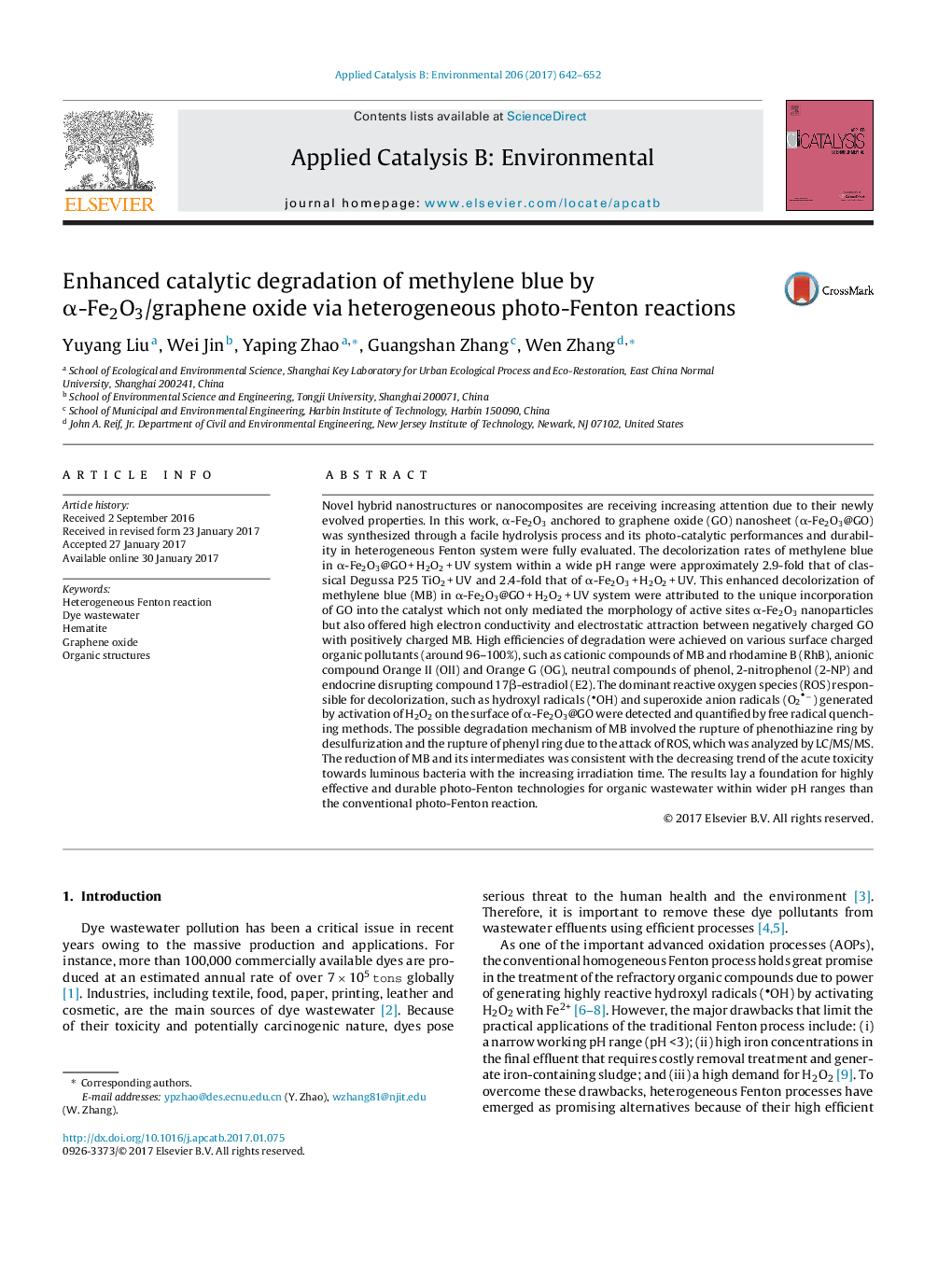| کد مقاله | کد نشریه | سال انتشار | مقاله انگلیسی | نسخه تمام متن |
|---|---|---|---|---|
| 6454769 | 1418814 | 2017 | 11 صفحه PDF | دانلود رایگان |

- α-Fe2O3 anchored on graphene oxide (α-Fe2O3@GO) was synthesized by a facile hydrolysis method.
- Methylene blue (MB) decolorization was enhanced in α-Fe2O3@GO in presence of H2O2 and UV irradiation.
- The enhancement related to efficient radical formation and electron transfer of α-Fe2O3@GO.
- New MB degradation mechanisms were proposed.
- Toxicity of the MB solution after photocatalytic degradation was reduced.
Novel hybrid nanostructures or nanocomposites are receiving increasing attention due to their newly evolved properties. In this work, α-Fe2O3 anchored to graphene oxide (GO) nanosheet (α-Fe2O3@GO) was synthesized through a facile hydrolysis process and its photo-catalytic performances and durability in heterogeneous Fenton system were fully evaluated. The decolorization rates of methylene blue in α-Fe2O3@GO + H2O2 + UV system within a wide pH range were approximately 2.9-fold that of classical Degussa P25 TiO2 + UV and 2.4-fold that of α-Fe2O3 + H2O2 + UV. This enhanced decolorization of methylene blue (MB) in α-Fe2O3@GO + H2O2 + UV system were attributed to the unique incorporation of GO into the catalyst which not only mediated the morphology of active sites α-Fe2O3 nanoparticles but also offered high electron conductivity and electrostatic attraction between negatively charged GO with positively charged MB. High efficiencies of degradation were achieved on various surface charged organic pollutants (around 96-100%), such as cationic compounds of MB and rhodamine B (RhB), anionic compound Orange II (OII) and Orange G (OG), neutral compounds of phenol, 2-nitrophenol (2-NP) and endocrine disrupting compound 17β-estradiol (E2). The dominant reactive oxygen species (ROS) responsible for decolorization, such as hydroxyl radicals (OH) and superoxide anion radicals (O2â) generated by activation of H2O2 on the surface of α-Fe2O3@GO were detected and quantified by free radical quenching methods. The possible degradation mechanism of MB involved the rupture of phenothiazine ring by desulfurization and the rupture of phenyl ring due to the attack of ROS, which was analyzed by LC/MS/MS. The reduction of MB and its intermediates was consistent with the decreasing trend of the acute toxicity towards luminous bacteria with the increasing irradiation time. The results lay a foundation for highly effective and durable photo-Fenton technologies for organic wastewater within wider pH ranges than the conventional photo-Fenton reaction.
The proposed degradation diagram of MB in α-Fe2O3@GO + H2O2 + UV system.
Journal: Applied Catalysis B: Environmental - Volume 206, 5 June 2017, Pages 642-652